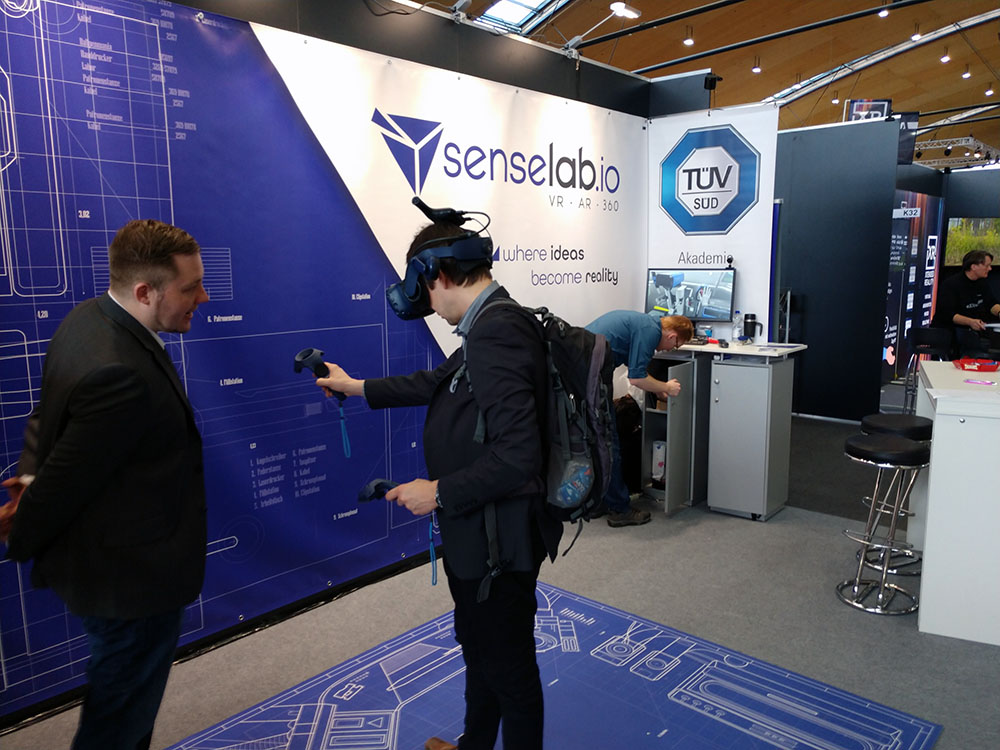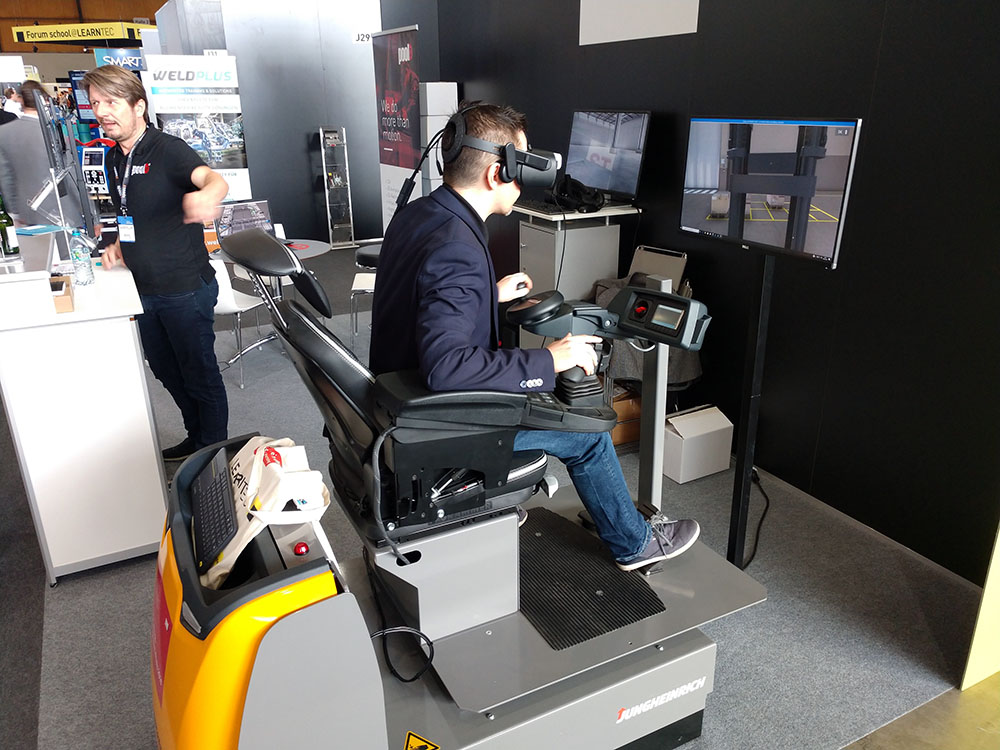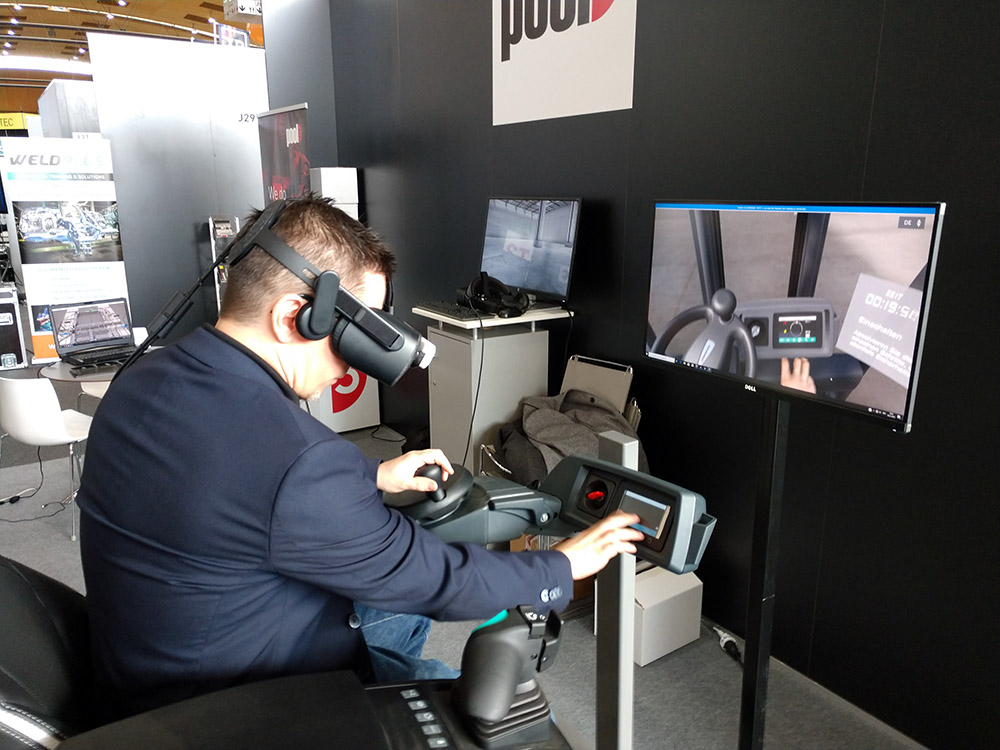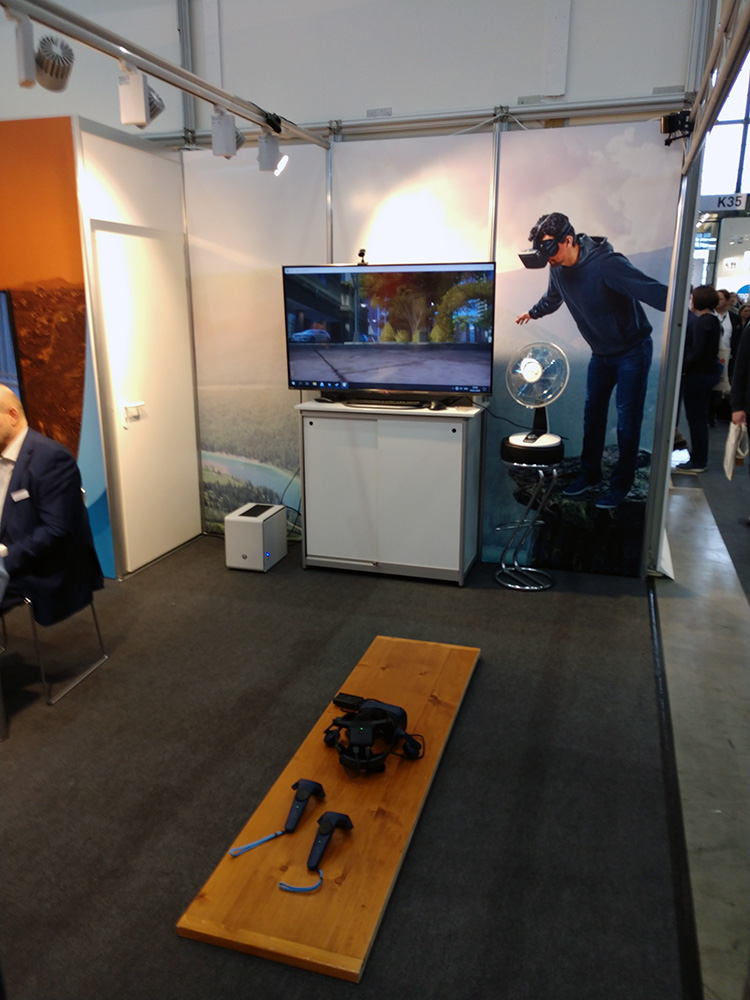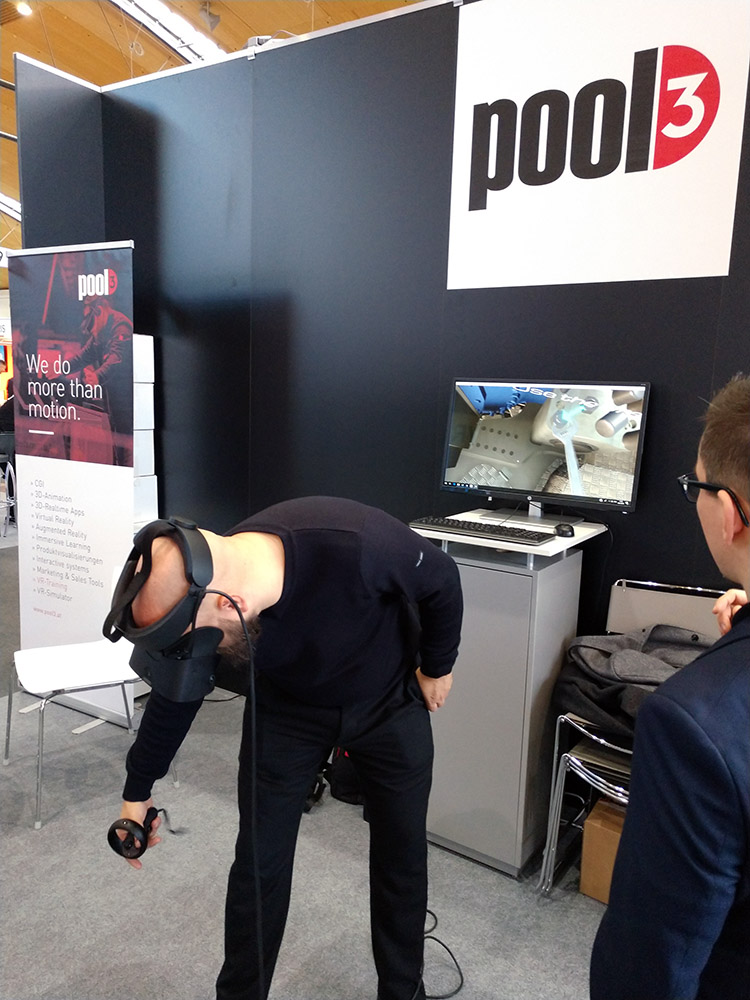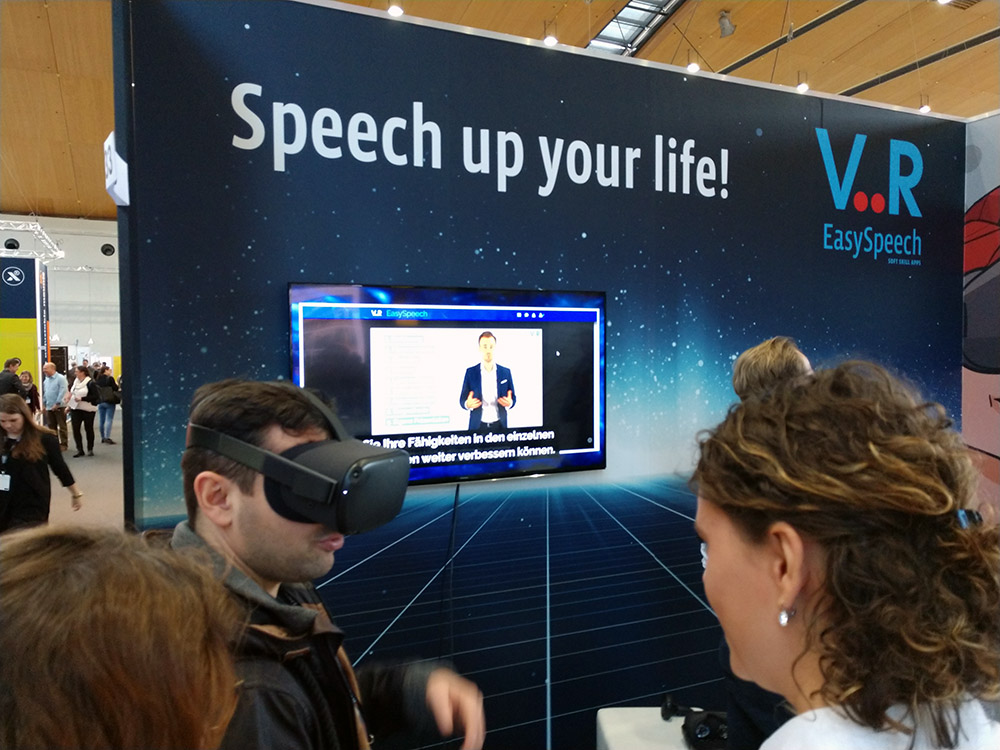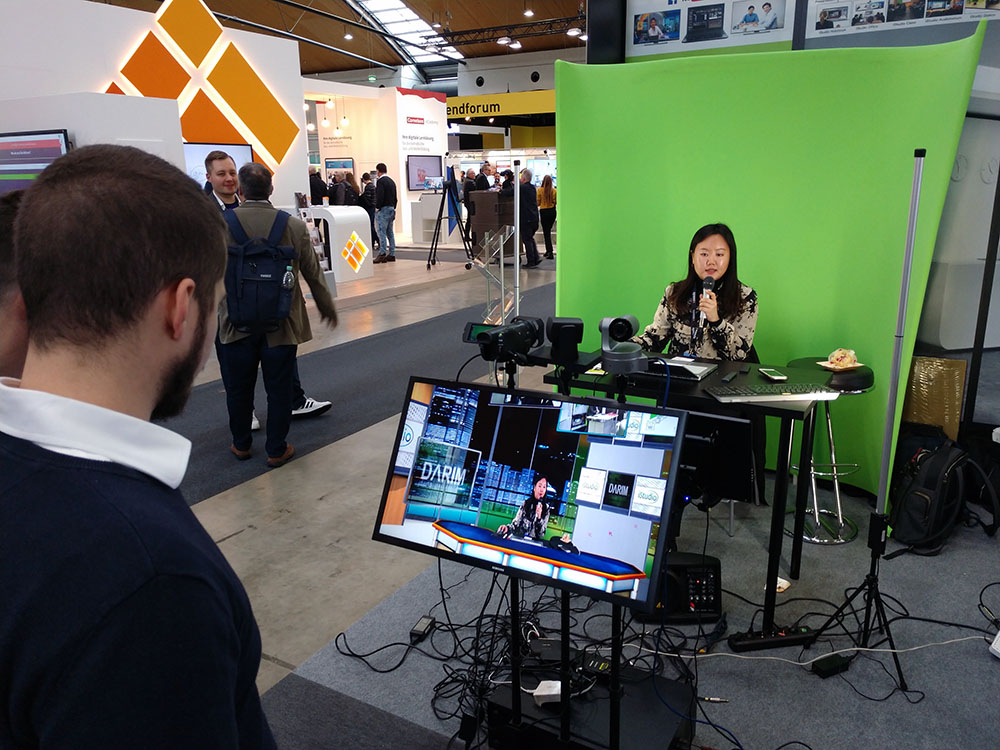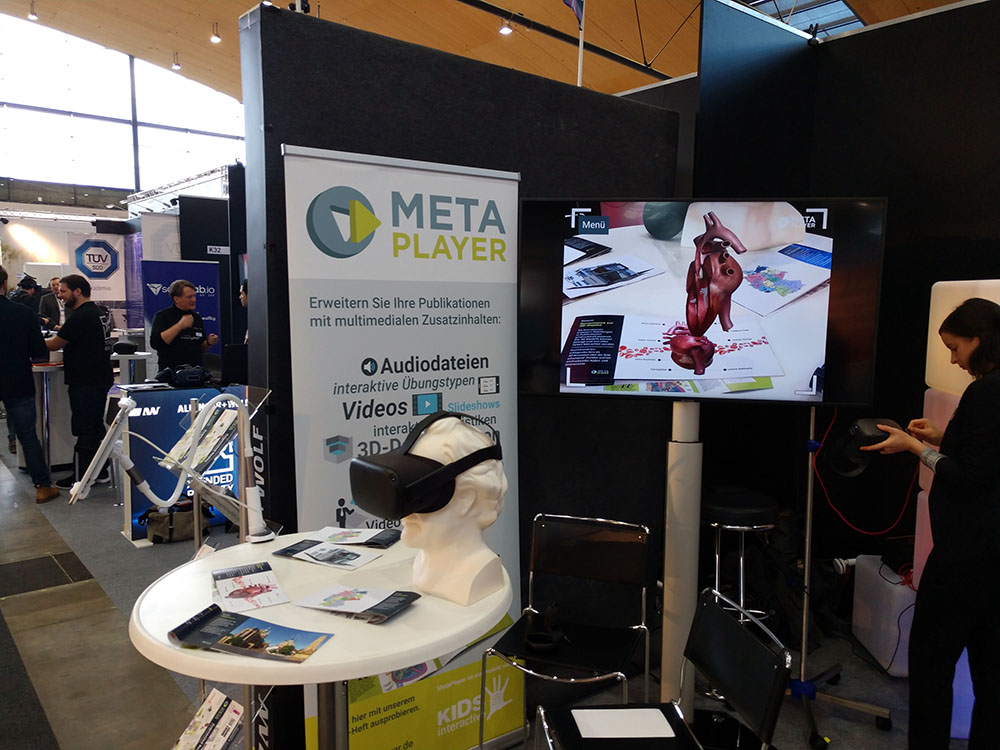Europe’s biggest trade show for digital education and training applications dedicated a whole area to VR and AR on the fairground at Karlsruhe. Whereas a great deal of the education offerings focused on learning tools for schools and institutions, the VR/AR area addressed a more industrial and professionally oriented audience.
VR Training Sims
The main application field of VR in education consists of training offerings for professional environments. Most of the training Parcours follow the patterns of serious puzzle games, where the user can compose and decompose virtual replica objects up to their tiniest parts. Standard platform is PC-based VR with Vive Pro equipment or Oculus RiftS. One company even offered a sandbox system for composing your own training Parcours in VR, providing you with the most essential building blocks to be customized for your company’s training needs.
The most sophisticated training simulation was a seated VR driving experience on a motion platform for exercising forklifter cargo tasks. The motion platform moved according to the trainee’s driving actions, performed on a haptic reconstruction of the real forklifter. The system uses a HP Reverb headset for high resolution visuals and Leap Motion hand tracking for natural hand interactions. This training simulation system is mostly used for introduction sequences of the professional training procedure. It allows for more numerous sessions on a small training space and prepares for deeper sessions on the real training ground by significantly reducing real world training hours.
Training sessions can be monitored by the trainer with following video reviews for better learning procedures. The virtual training parcours is an entirely physical workspace with cargo weights on hallways, walking coworkers and several forklifters driving around. Whenever the trainee causes damage with the forklifter in the virtual working space, the system immediately stops and calculates the costs of the accident.
AI Analysis Features
Many apps use artificial intelligence for immediate analysis of training session results. Some companies use VR for presentation training with speech analysis. A session with a VR headset in simulated conference rooms prepares for public presentation in real working situations. An AI speech analysis points out the breaks in the flow of the speech afterwards, and then indicates changes of voice or inaccurate pronounciations as well as the eye contact of the speaker with the audience.
AR Presentation Platforms
I spotted a range of Hololens demonstrations for construction works, space measurement and fine tuning assembling tasks. But AR is also used for presentation training, product placements and inhouse communication. A Korean company showcased a modular virtual studio system replacing a whole TV studio environment for business communication purposes.
Learning outcomes for VR industries
While the VR consumer market still struggles for establishing reliable production frameworks for proven success stories, the training and education market for VR looks far more experienced in setting these up. Software companies co-create simulation platforms directly with manufacturers, like in the case of the forklifter training system. Agencies use pre-established briefing procedures for adapting their gamification exercises to specific customer needs. All products are multi-modal, customizable and applicable on all major VR hardware platforms. The most common business model for VR training services is based on subscription fees.
all images © 2020 Jochen Schmidt

